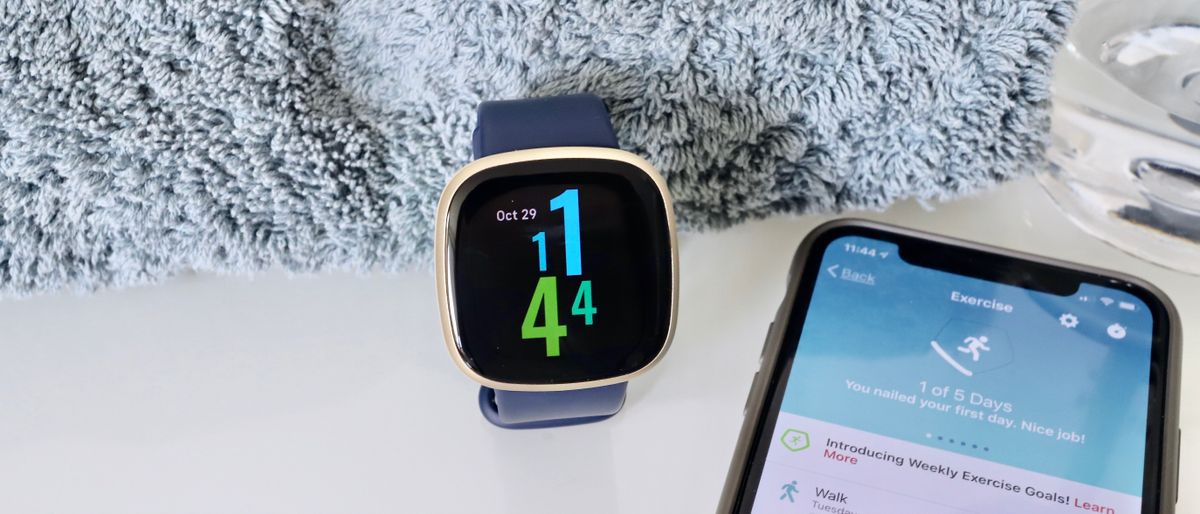Anyone who’s been following TechRadar’s Fitbit coverage knows that the brand has been in a slow decline ever since Google first purchased it in 2019. From criticisms over the app redesigns to leaked health data scandals to axed community features, Fitbit has had its fair share of woes over the last few years.
This week, Google unveiled its new Google Pixel Watch 3 at the Made by Google 2024 event, which showcased Google’s latest and greatest hardware. The Google Pixel Watch 3 is a true smartwatch, stuffed with features and boasting many of Fitbit’s best features, including its Daily Readiness Score. Usually available only for Fitbit Premium subscribers, Pixel Watch 3 owners get it absolutely free.
Unfortunately, we also saw some sad news for Fitbit fans: the Pixel Watch 3’s announcement spelled the end for other Fitbit smartwatches. Google quietly confirmed that there would never be another Fitbit Sense or Versa model produced. From now on, Fitbit-branded devices will be relegated to Google’s best fitness trackers: the Fitbit Inspire, Luxe, and Charge ranges. The smartwatch form factor would be exclusively reserved for the Pixel Watch line.
This is sad news. Fitbits were among the best cheap smartwatches you could buy: they lasted longer than most traditional smartwatches do today, and people loved the form factor. I know of at least three people in my everyday life who aren’t techie at all, who wear Fitbit Versa models they’ve had for years, and they love them. The Fitbit Versa 2 and 3, in particular, were very well received, and the Versa 3 hung onto the top spot of our best Fitbit guide for years after its introduction.
The Versa 2 was a lovely watch that debuted in 2019, and likewise, it was something I recommended to many people a long time after its debut. It used to get down to around $140 / £120 / AU$200 in the Amazon Prime Day and Black Friday sales events, and at that price, it was a veritable steal. Even then, it had a built-in Alexa voice assistant, notification functionalities, 24/7 heart rate tracking, and (crucially) 4-day battery life.
It looked quite Apple-Watchy with a rectangular physical button instead of a digital crown, which only added to its appeal: plenty of people looking for a reputable smartwatch, that couldn’t afford an Apple model, bought these as a substitute thanks to Fitbit’s system-agnostic approach to devices.
Unfortunately, the Fitbit Versa 4 and Fitbit Sense 2 weren’t as well-reviewed. It was missing any way to control your music, with no music apps supported at all. The Charge 6, the next Fitbit device released, supported YouTube music. The Pixel Watch line, on the other hand, supports YouTube music on-device and can control plenty of music apps, including Spotify, Deezer and Pandora, on your phone.
This was the first indication that Fitbit’s smartwatches were being systematically squeezed out of the frame in favor of Google’s Pixel Watches. Once Google completed its acquisition in January 2021 and debuted its first Pixel Watch in 2022, the Versa and the Sense watches were holdovers of a bygone era.
It’s clear now Google finished up those projects that were already in development by Fitbit’s team, released them with gutted features to drive more Fitbit customers towards the Pixel Watch family of devices, and has declined to produce any more devices.
Just like the Pebble before it, Fitbit watches are now consigned to wearable history. If you already have one at home, treasure it, because you won’t be getting another one – perhaps go for a walk and log 10,000 steps in its honor.











